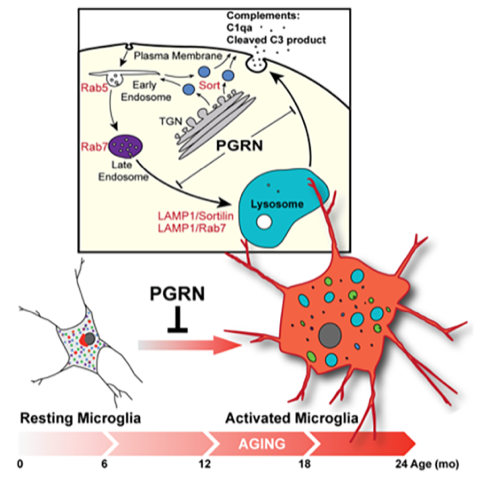You are here
Glial Toxicity in Neurodegeneration: Is There a General Principle?
Speakers
Abstract
Mutations in human progranulin (GRN) gene cause frontotemporal lobar degeneration (FTLD), characterized by TDP-43 protein aggregates in neuronal cytoplasm and dendrites. However, the disease mechanism caused by GRN mutations remains poorly understood. Using Grn knockout (Grn-/-) mice and the GrnR493X knock-in mice, we have previously shown that progranulin deficiency causes age-dependent microglial activation, preferential elimination of inhibitory synapses in the ventral thalamus, and hyperexcitability in the thalamocortical circuits and obsessive-compulsive disorder-like grooming behaviors. In our ongoing work, we use single cell RNA-seq to further characterize the precise timing of transcriptomic and functional changes in Grn-/- microglia and Grn-/- astrocytes in the aging process. Surprisingly, this approach reveals previously unrecognized vulnerability of excitatoryneurons that are selectively eliminated toward disease end-stage. Consistent with these results, in vitro assays show that Grn- /- astrocytes promote synaptic dysfunctions, whereas Grn-/- microglia promote TDP-43 accumulation in neuronal cytoplasm and dendrites, and cell death in excitatory neurons. These results delineate the contributions of glial pathology to neuronal vulnerability in neurodegeneration caused by progranulin deficiency. Whether the same glial toxicity is applicable to other neurodegenerative diseases remains an area of active investigation in my lab.


